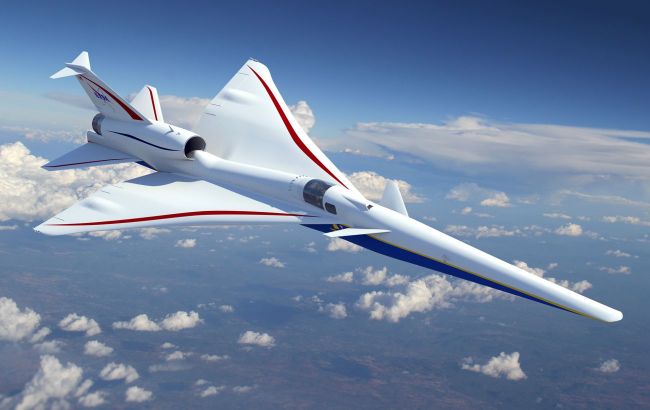US X-59 supersonic jet takes off in first-ever test flight
 Photo: The US has tested the unique X-59 supersonic aircraft for the first time (nasa.gov)
Photo: The US has tested the unique X-59 supersonic aircraft for the first time (nasa.gov)
In the United States, NASA's X-59 jet aircraft, designed to break the sound barrier with minimal noise, took to the skies for the first time, Reuters reports.
The aircraft, built for NASA by aerospace contractor Lockheed Martin, took off about an hour after sunrise from the runway at the company's Skunk Works facility in Palmdale, about 100 km north of Los Angeles.
After takeoff, the aircraft turned north toward Edwards Air Force Base, where it landed safely about an hour later near NASA's Armstrong Flight Research Center. It was accompanied by a NASA chase plane.
About 200 aerospace workers and their families watched the takeoff from a safe distance, parked along a nearby highway.
Key feature
The aircraft's unique shape is designed to reduce the explosive sonic boom that typically occurs when an aircraft breaks the sound barrier.
According to Lockheed, the improvement of this low-noise flight technology is aimed at overcoming one of the main obstacles to supersonic commercial flights, which have long been restricted over populated areas due to noise issues.
Specifications and price
NASA is known to have paid Lockheed more than $518 million since 2018 for the development and demonstration of the X-59.
The single-engine jet, just under 30 meters long, flew at subsonic speeds during its first flight, reaching 370 km/h.
Its peak altitude during the flight was 3,660 meters. Overall, the X-59 is designed to reach a cruising speed of 1,490 km/h at an altitude of 16,764 meters.
The Pentagon is preparing to select a contractor to develop the new F/A-XX carrier-based fighter jet, a key US Navy project to counter China. The program is expected to determine the future of naval aviation.

